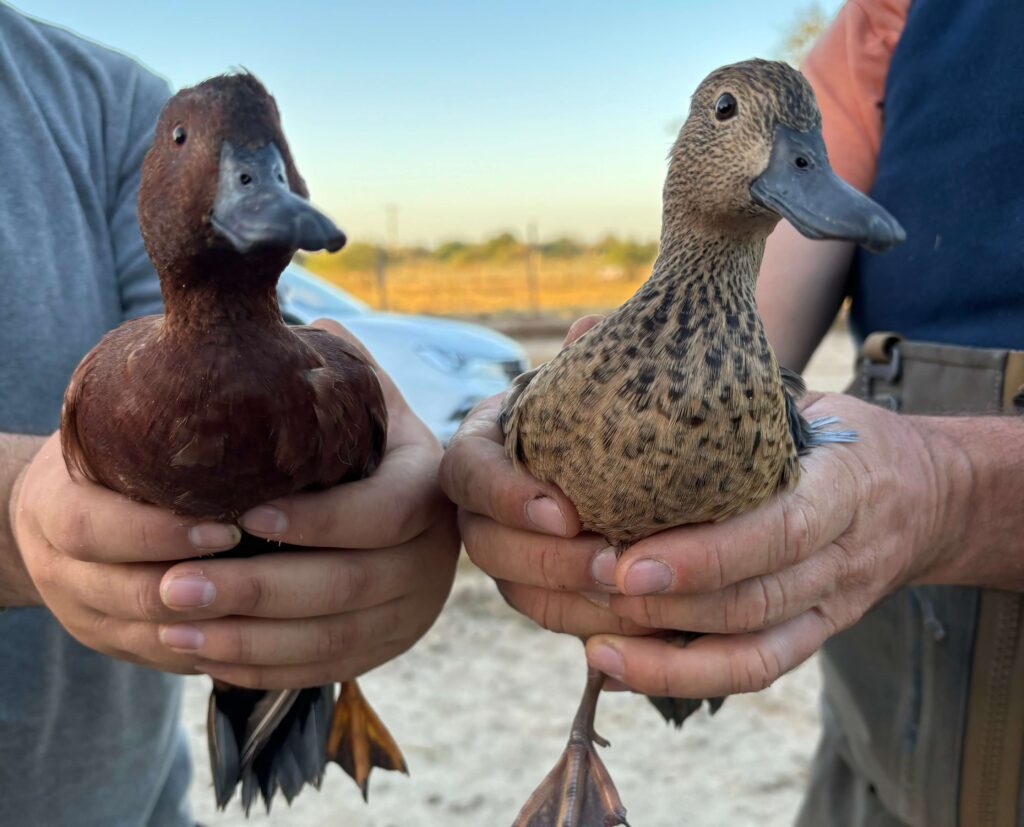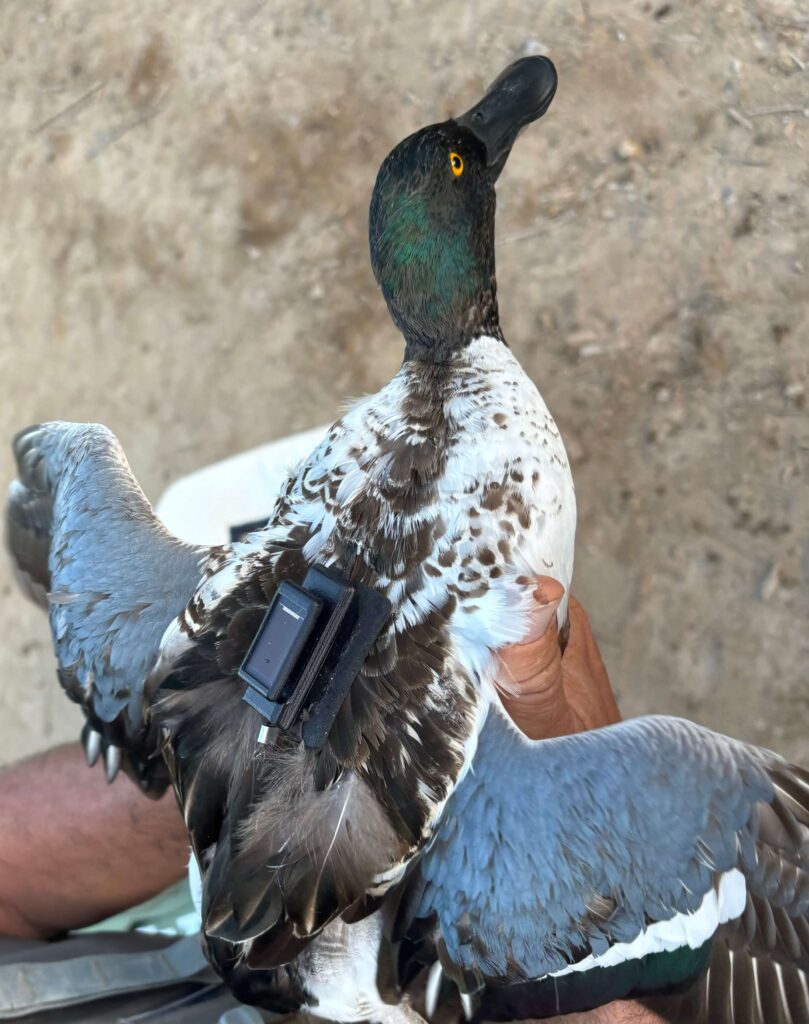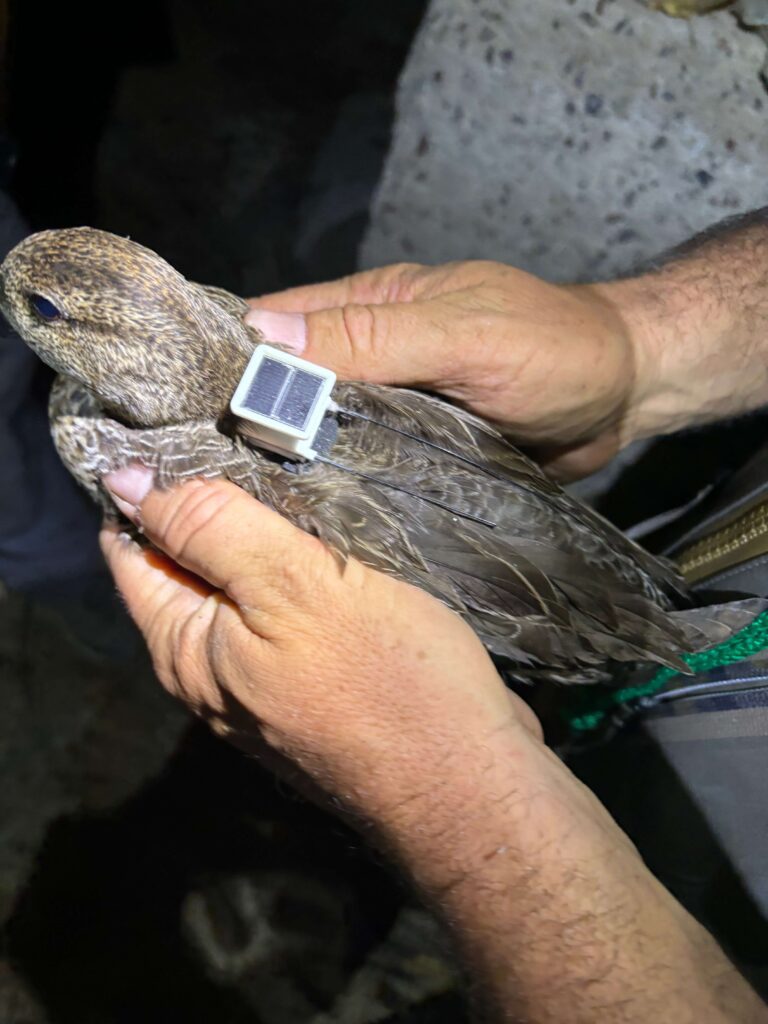Different Ducks Move...Differenlty
Waterfowl Movement Report
Greer Smith
January 3, 2024
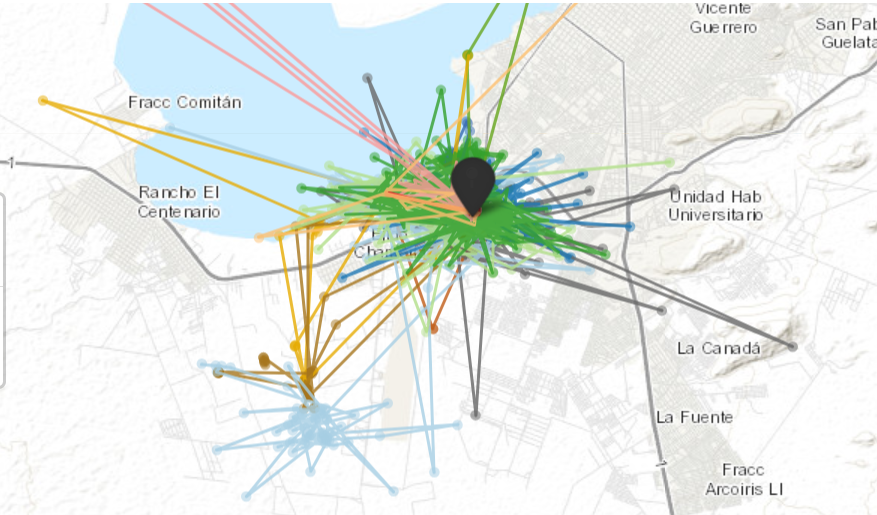
Movement Report 1/2/2024 LIVE
The initial 25 days of our newest 19 GPS-tagged waterfowl have provided us with invaluable insights into the behaviors and movements of our GPS-banded teal. This period marks the next chapter of an extensive study now including an additional 4 Green-winged Teal (GWTE), 4 Blue-winged Teal (BWTE), 1 Northern Shoveler (NSHO), and 11 Cinnamon Teal (CITE). As we continue to expand our research to include larger-bodied ducks in the coming months, our understanding of these complex creatures deepens.
Waterfowl behavior is a fascinating aspect of avian research. Each duck, through its distinct patterns of movement, contributes to a broader narrative about adaptation and survival. Our recent observations of 19 tagged individuals during a non-migratory period reveal the varied nature of these species and individuals. For example, GWTE #4, known as “Queen,” averages 7.93 miles traveled per day, while CITE #7, “Mrs. Quack Quack,” moved a mere 0.79 miles per day. These differences prompt us to consider the underlying factors influencing their behaviors. The daily movement distances is presented in charts below.
A note to the reader, In our reports, we reference each duck by both its scientific tag and the name given by contributors to our project, including extra special middle school students with a passion for wildlife. This dual naming system allows us to respect the scientific process while acknowledging these special kids’ joy and developing love of waterfowl.
Included in this update are comprehensive charts and a detailed PDF histogram analyzing all duck speeds. This analysis highlights a critical aspect of waterfowl life: despite occasional long-distance movements, these birds spend the majority of their time engaging in activities near or on the water’s surface. Our dataset, which now exceeds 50,000 data points across 5 species including 29 waterfowl, indicates that airtime comprises less than 2% of their overall activity. To read more on movement analysis of previous ducks check out our previous blog on BWTE movement patterns.
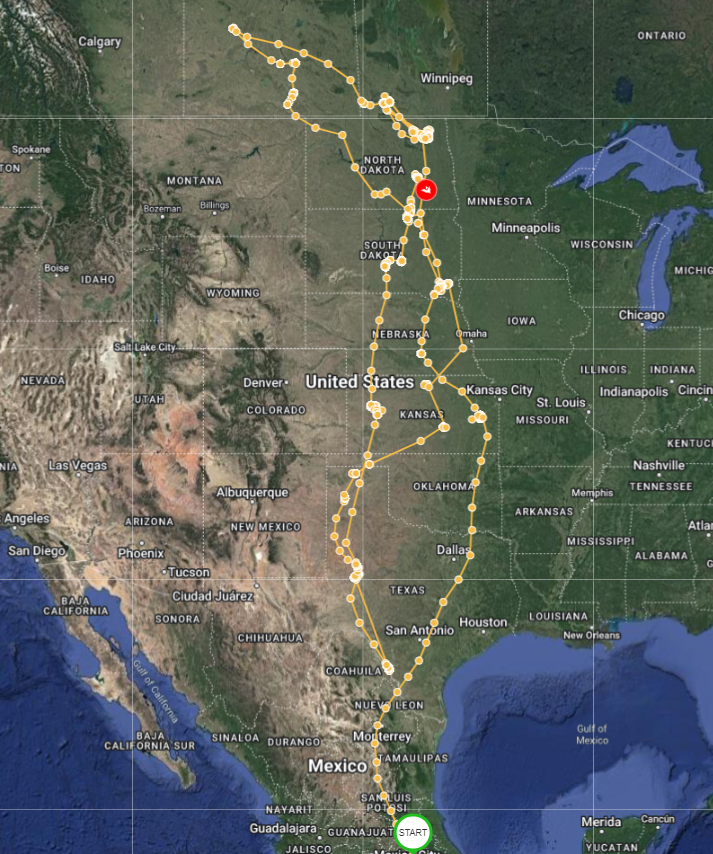
Our observations also underscore the diversity within routine behaviors. Some ducks exhibit local movement patterns, while others, like “Stetson,” undertake more extensive travels, even outside traditional migratory periods. This variability provides us with questions and directions for future research.
Additionally, we present a case study of a Northern Shoveler’s incredible 16,600-mile journey over two years. This example, alongside others, is accessible on our interactive 50 Ducks map, offering an opportunity for in-depth exploration of individual waterfowl trajectories. And also gives a sneak peak into what we hope to observe from some of our newest tagged waterfowl.
As we proceed with this project, our goal remains to provide a thorough and rigorous analysis of waterfowl movements, contributing to the broader scientific understanding of these species. We invite you to join us in examining the data and discovering the intricate patterns that define the lives of these remarkable birds.


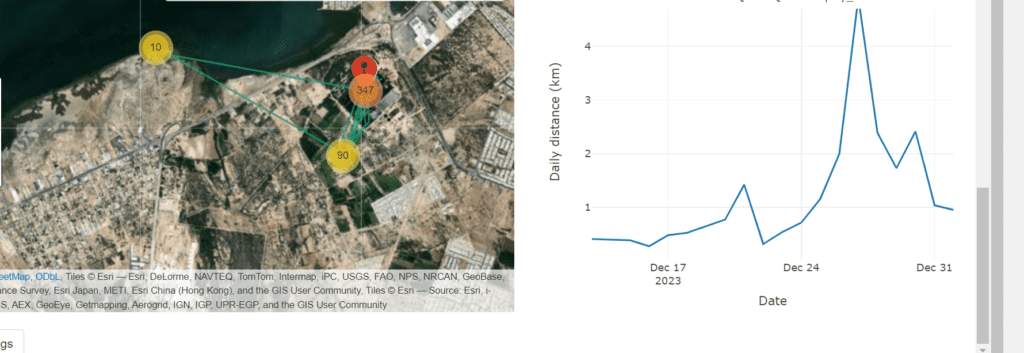
A note to the reader, In our reports, we reference each duck by both its scientific tag and the name given by contributors to our project, including extra special middle school students with a passion for wildlife. This dual naming system allows us to respect the scientific process while acknowledging these special kids’ joy and developing a love of waterfowl.
